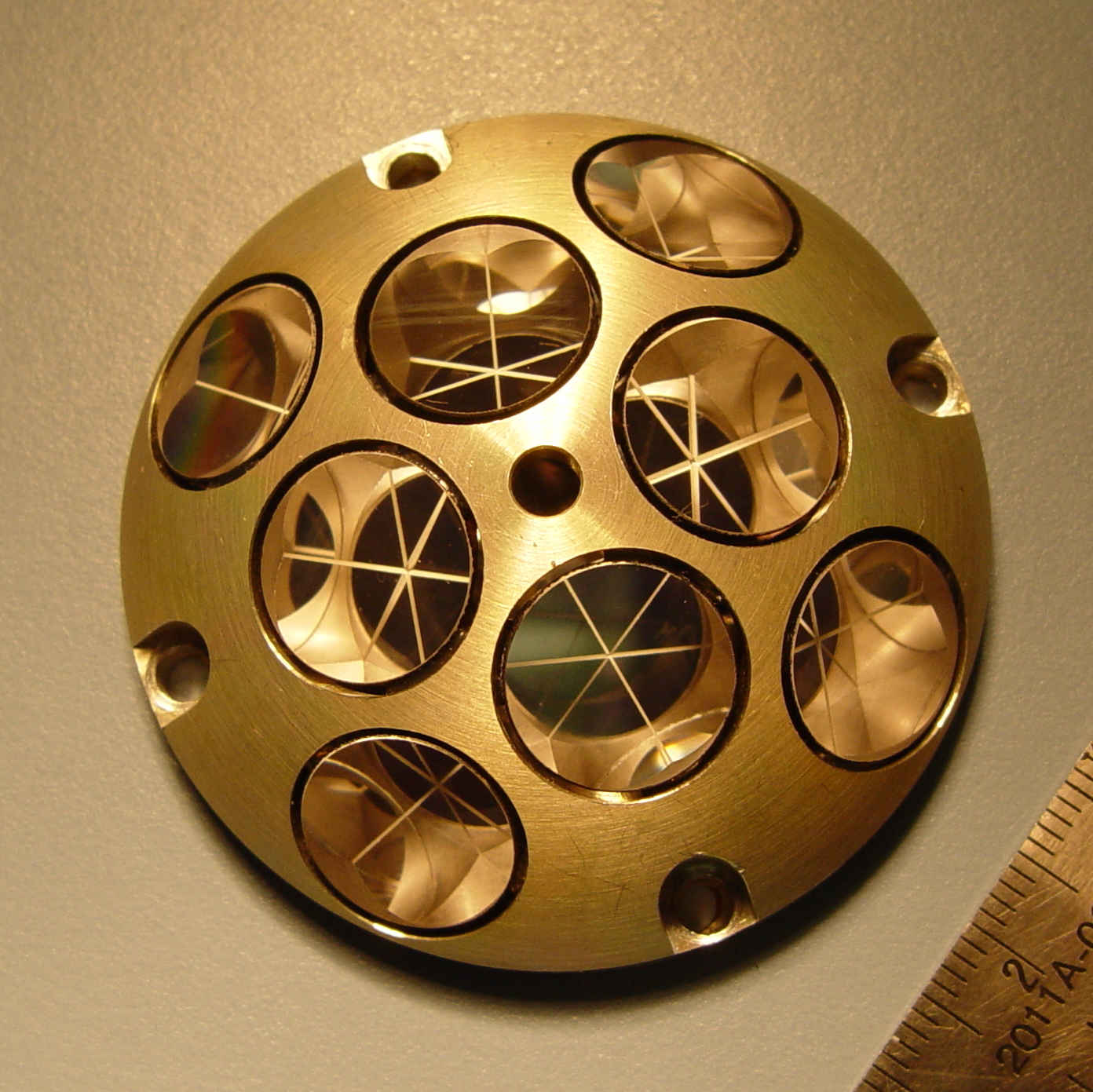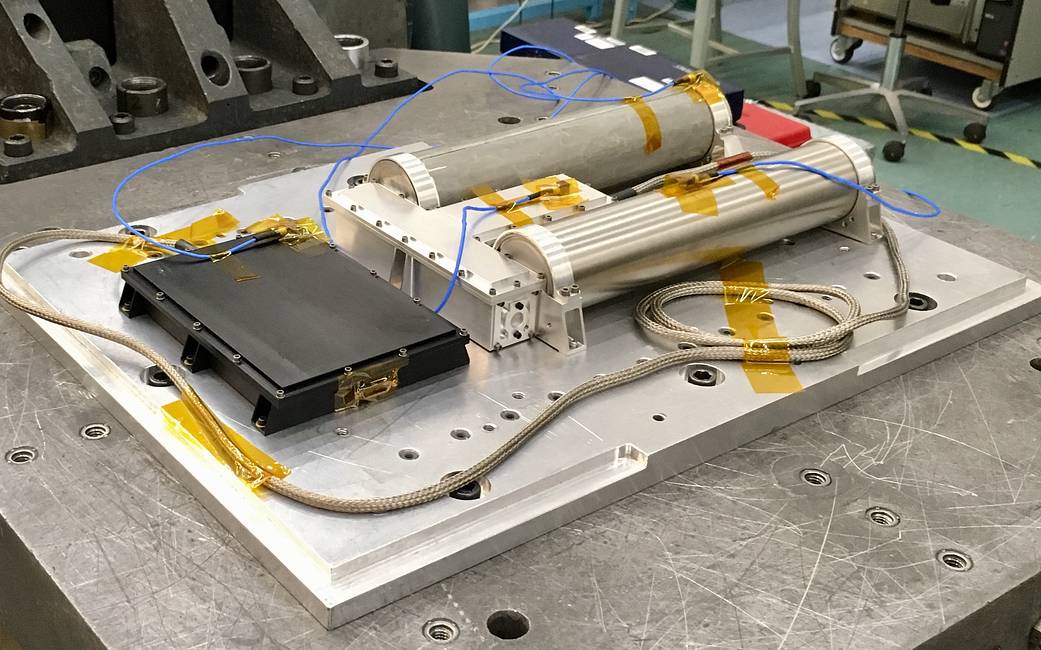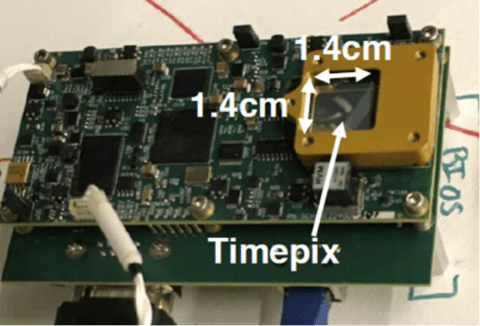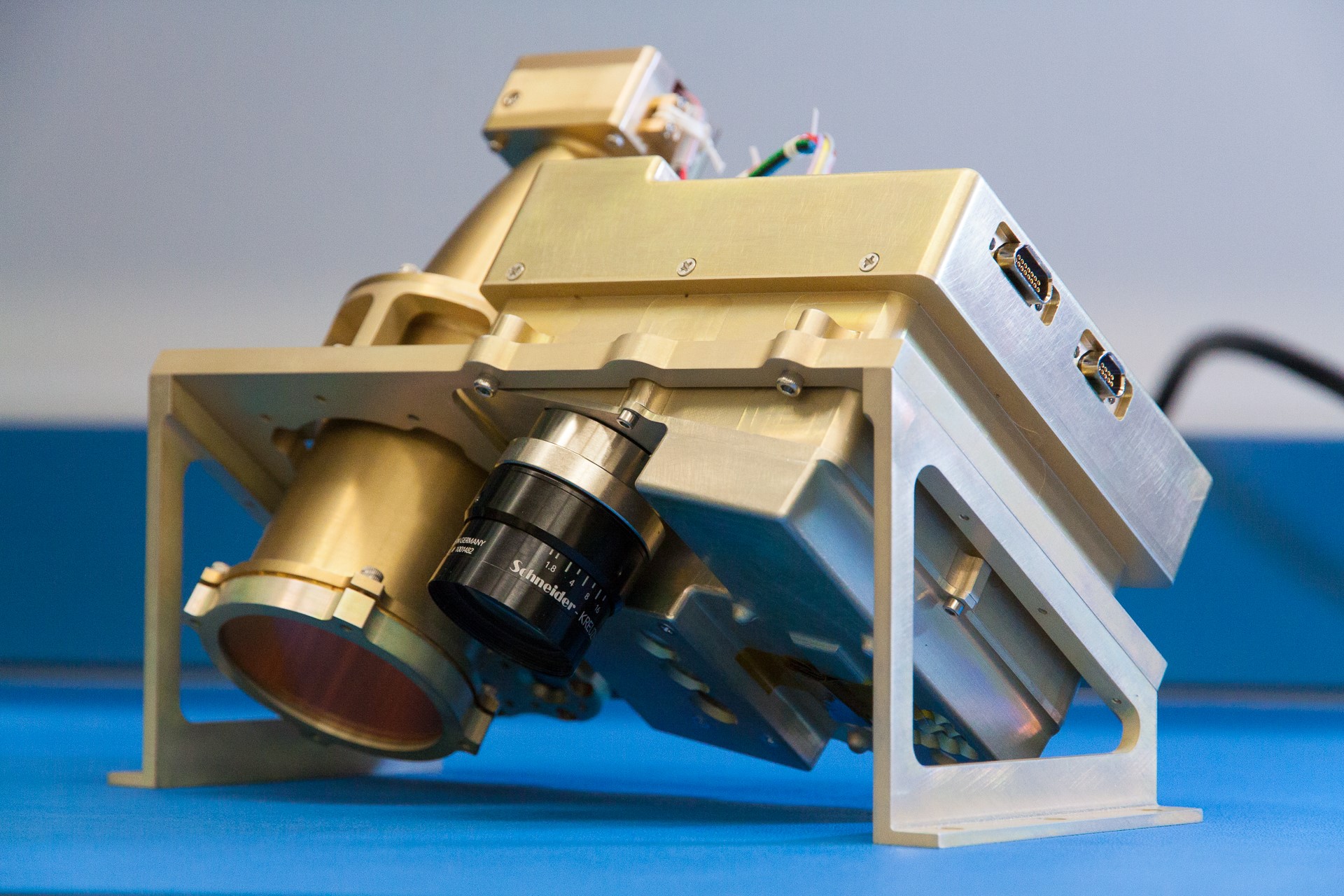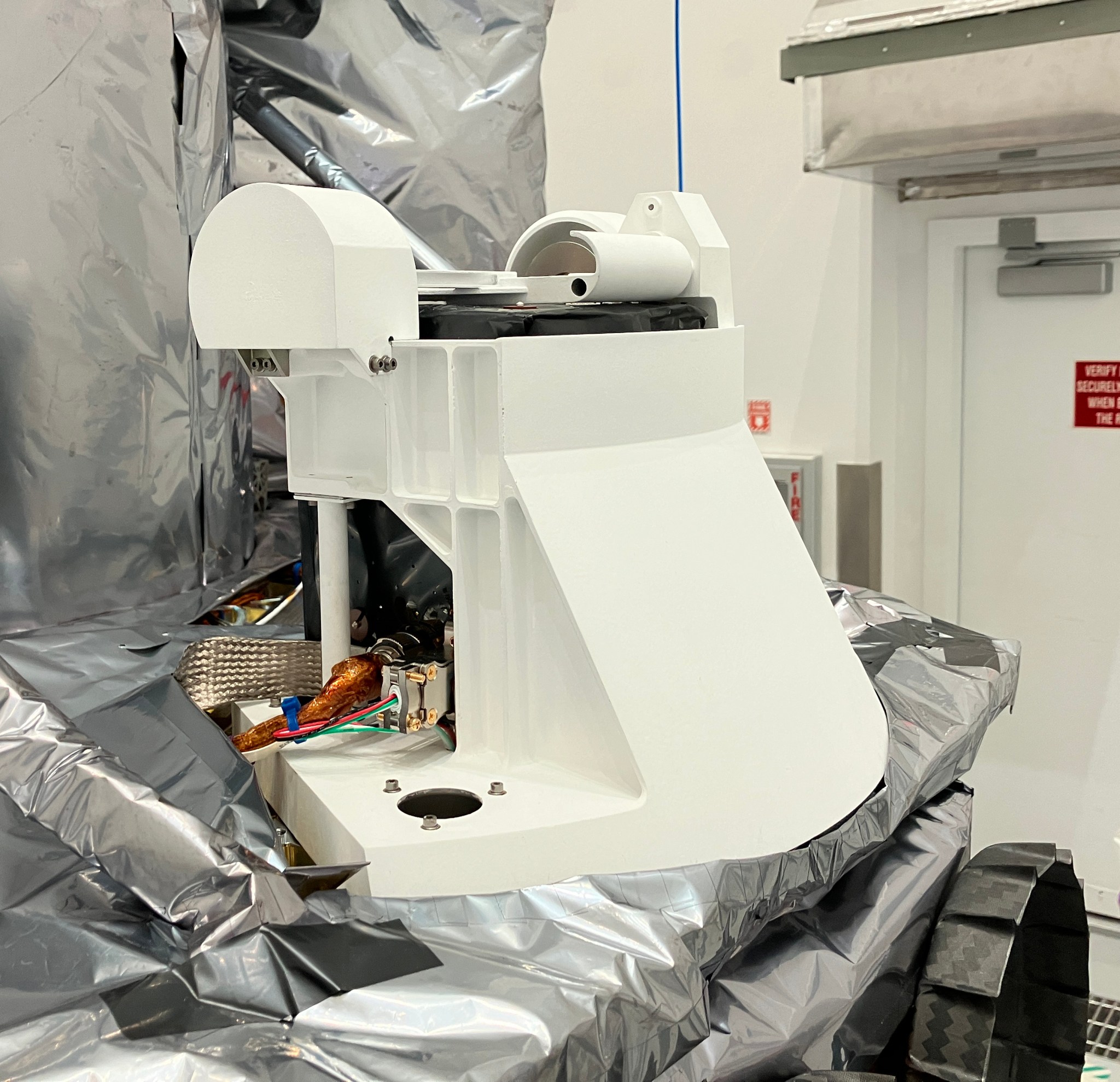Update (April 6, 2023)
Working closely with the Peregrine Mission 1 (TO2-AB) contractor Astrobotic, some payloads have been reallocated to future missions to maintain performance margins in Peregrine’s descent to the lunar surface.
This manifest upholds NASA’s commitment to ESA to fly Peregrine Ion-Trap Mass Spectrometer (PITMS) as well as preserving the vital measurements that will complement Lunar-VISE’s nearby future delivery. All reallocated payloads will be delivered by CLPS, international missions, or Artemis human landing system missions.
Updated Manifest
- Laser Retroreflector Array (LRA) - Goddard Space Flight Center (GSFC), PI: Dr. Xiaoli Sun
- Neutron Spectrometer System (NSS) - Ames Research Center (ARC), PI: Dr. Richard Elphic
- Linear Energy Transfer Spectrometer (LETS) - Johnson Space Center (JSC), Dr. Edward Semones
- Near InfraRed Volatiles Spectrometer System (NIRVSS) - Ames Research Center (ARC), Dr. Anthony Colaprete
- Peregrine Ion-Trap Mass Spectrometer (PITMS) - Goddard Space Flight Center/European Space Agency (GSFC/ESA)
The following NASA payloads (originally planned for T02-AB) are being reallocated to future lunar delivery missions:
- Surface Exosphere Alterations by Landers (SEAL) - Goddard Space Flight Center (GSFC)
- Mass Spectrometer Observing Lunar Operations (MSolo) - Kennedy Space Center (KSC)
- Photovoltaic Investigation on Lunar Surface (PILS) - Glenn Research Center (GRC)
- Fluxgate Magnetometer (MAG) - Goddard Space Flight Center (GSFC)
- Neutron Measurements at the Lunar Surface (NMLS) - Marshall Space Flight Center (MSFC)
Laser Retroreflector Array (LRA)
Summary: A retroreflector bounces any light that shines on it directly backward (180° from the incoming light). The LRA is a collection of eight of these, each a 1.25-cm diameter glass corner cube prism, all embedded in an aluminum hemisphere (painted gold as shown here) and mounted to the lander deck. This design ensures that the LRA can retroreflect (i.e., bounce) laser light from other orbiting and landing spacecraft over a wide range of incoming directions and efficiently retroreflect the laser signal directly back at the originating spacecraft. This enables precision laser ranging, which is a measurement of the distance between the orbiting or landing spacecraft to the LRA on the lander. The LRA is a passive optical instrument and will function as a permanent fiducial (i.e., location) marker on the Moon for decades to come. (Note: this LRA design is too small for laser ranging from the Earth).
Type of Instrument: Passive optical device that reflects laser light directly backward (for laser ranging)
Key Measurement: Provides marker for future assets to determine precise locations
Task Order: CLPS TO2-AB
Lead Development Organization: NASA Goddard Space Flight Center (GSFC)
Payload PI: Dr. Xiaoli Sun
Neutron Spectrometer System (NSS)
Summary: The NSS instrument will determine the abundance of hydrogen-bearing materials and the bulk regolith composition at the landing site and measure any time variations in hydrogenous volatile abundance during the diurnal cycle. NSS can measure the total volume of hydrogen up to three feet below the surface, providing high-resolution ground truth data for measurements made from instruments in orbit around the Moon. NSS measures the number and energy of neutrons present in the lunar surface environment, which can be used to infer the amount of hydrogen present in the environment. This detection is possible because when neutrons strike a hydrogen atom, they lose a lot of energy.
Type of Instrument: Neutron Spectrometer
Key Measurement: Volatile composition in the near sub-surface; Measures cosmic ray-generated neutrons using two helium gas-proportional counters to detect thermal and epithermal neutrons with less than 0.1% uncertainty
Lead Development Organization: NASA ARC
Payload PI: Dr. Richard Elphic
Linear Energy Transfer Spectrometer (LETS)
Summary: During lunar exploration missions outside of the Earth’s protective atmosphere, exposure to space radiation has a detrimental effect on the health of the astronauts. Lunar surface environments present a greater radiation risk to the astronaut than Low Earth Orbit (LEO). There are two sources of radiation risk for lunar surface environments. The first source of risk is the total radiation dose from Galactic Cosmic Rays, which is about twice as high on the lunar surface as in LEO. The second source of risk is from space weather events resulting from solar activity. The Linear Energy Transfer Spectrometer (LETS) is a radiation monitor that is derived from heritage hardware flown on Orion EFT-1 and slated to fly on the Orion EM-1 mission that will enable acquisition of knowledge of the lunar radiation environment and demonstrate the capabilities of a system on the lunar surface. The LETS radiation sensor is a solid-state silicon Timepix detector that is derived from heritage hardware that was flown on Orion EFT-1. This sensor will measure the rate of incident radiation providing, information that is critical to understanding and mitigating the hazardous environment that people will experience as they explore the surface of the Moon.
Type of Instrument: Radiation Sensor
Key Measurement: Radiation
Lead Development Organization: NASA JSC
Payload PI: Dr. Edward Semones
Near-Infrared Volatile Spectrometer System (NIRVSS)
Summary: The payload includes a spectrometer context imager and a longwave calibration sensor. It measures surface and subsurface hydration (H2O and OH) and CO2 and methane (CH4) while simultaneously mapping surface morphology and surface temperature. The plan is for the measurements to take place during rover traverse when integrated onto a rover, throughout areas of targeted volatile investigation (called science stations), and during drilling activities. This instrument was created at NASA Ames Research Center. In total, it has three specific instruments: the near-infrared spectrometer, Ames imaging module, and longwave calibration sensor.
The near-infrared spectrometer captures the reflected spectra of the lunar surface when illuminated with light of a variety of wavelengths. This information can be used to determine the material properties of the lunar surface and identify if water or other materials are present in an image. The Ames imaging module is a camera that captures images to contextualize the spectrometer data. The longwave calibration system precisely measures the temperature of the lunar surface to calibrate data from the spectrometer.
Type of Instrument: Two-channel Near-infrared Point Spectrometer
Key Measurement: Volatile composition of surface and subsurface
Lead Development Organization: NASA ARC
Payload PI: Dr. Anthony Colaprete
Peregrine Ion-Trap Mass Spectrometer (PITMS)
Summary: PITMS will characterize the lunar exosphere after descent and landing, and throughout the lunar day, to understand the release and movement of volatile species. Previous missions have demonstrated the presence of volatiles at the lunar surface, but significant questions remain about the where those volatiles came from and how they are transported across the lunar surface. Investigating how the lunar exosphere changes over the course of a lunar day can provide insight into the transport process for volatiles on the Moon. The instrument has the ability to measure the low level of gases expected in the lunar exosphere and released by regolith interaction with surface disturbances, like rovers.
The PITMS sensor has direct heritage from the Ptolemy mass spectrometer that made the first in situ measurements of volatiles and organics on comet 67P with the Rosetta lander, Philae. PITMS operates in a passive sampling mode, where molecules fall into the zenith-facing aperture and are trapped by a radiofrequency field, then sequentially released for analysis. PITMS has a unit mass resolution up to an upper mass-to-charge (m/z) limit of 150 Da.
The PITMS investigation will provide time-resolved variability of OH, H2O, noble gases, nitrogen, and sodium compounds released from the soil and present in the exosphere over the course of a lunar day. PITMS observations will complement other instruments on board the Peregrine lander for a comprehensive approach to understanding the surface and exosphere composition, linking surface properties and composition to LADEE measurements from orbit, and providing a mid-latitude point of comparison for polar measurements planned by VIPER, PROSPECT, and other missions. The PITMS data provide a critical mid-latitude link to future polar mass specs to characterize the latitudinal migration of volatiles from equator to poles.
PITMS is a joint NASA-ESA project implemented by NASA’s Goddard Space Flight Center (GSFC) and ESA’s contractors Open University (OU) and STFC RAL Space, with coordination and support provided by ESA’s Space Research and Technology Centre (ESTEC). The integrated PITMS payload and science investigation will be operated by GSFC with an international team of scientists.
Type of Instrument: Ion Trap Mass Spectrometer
Key Measurement: Volatile composition in the lunar exosphere
Lead Development Organization: NASA GSFC
Payload PI: Dr. Barbara Cohen































